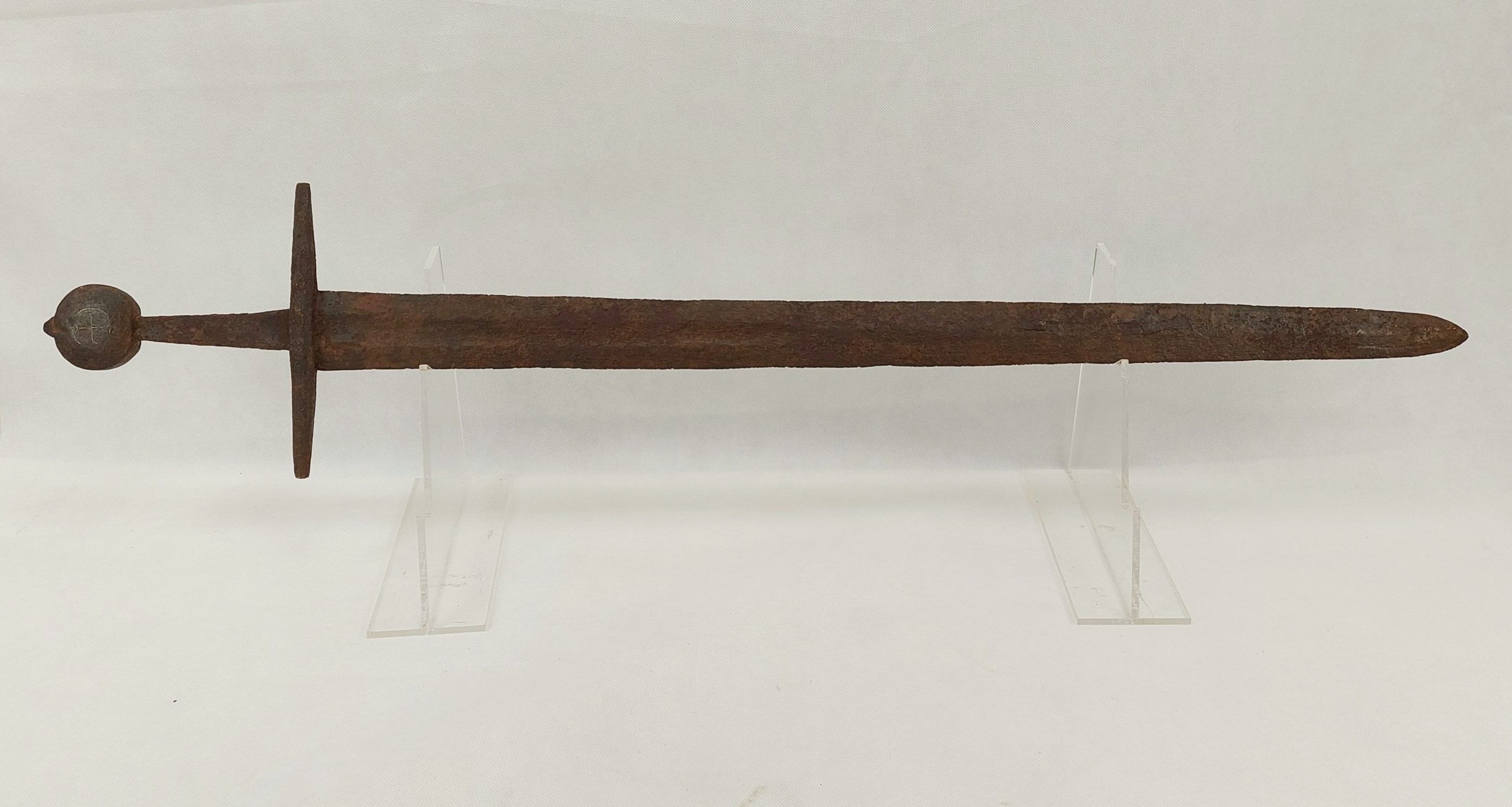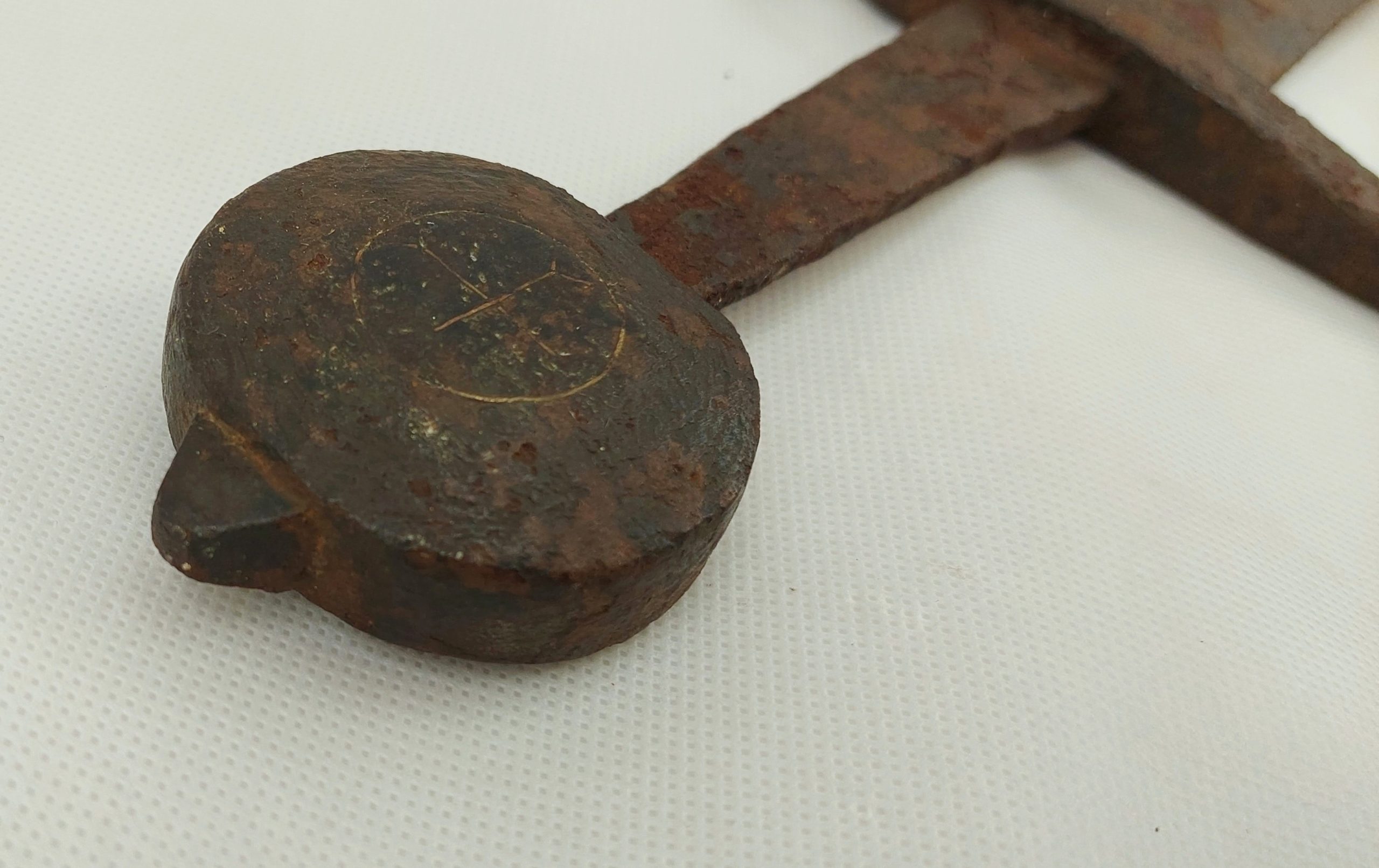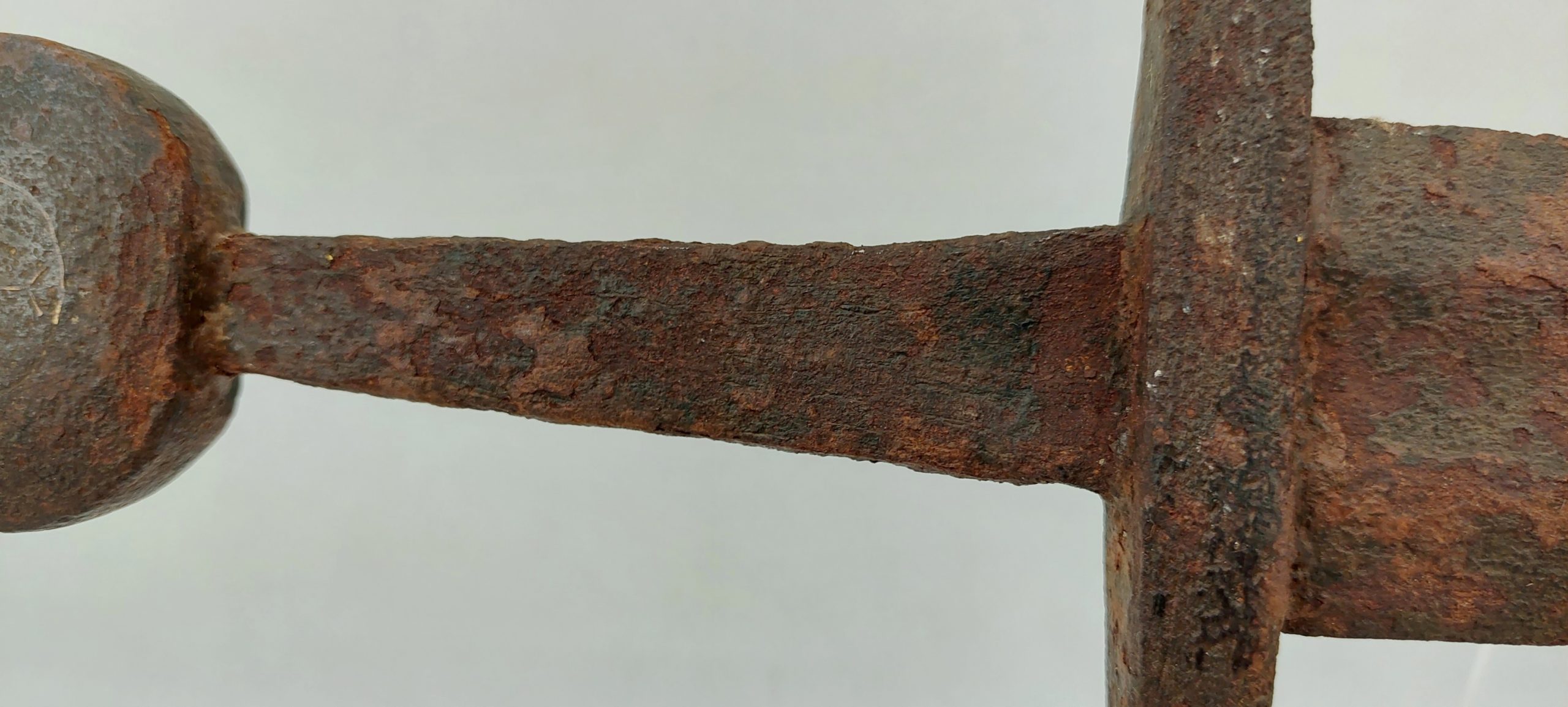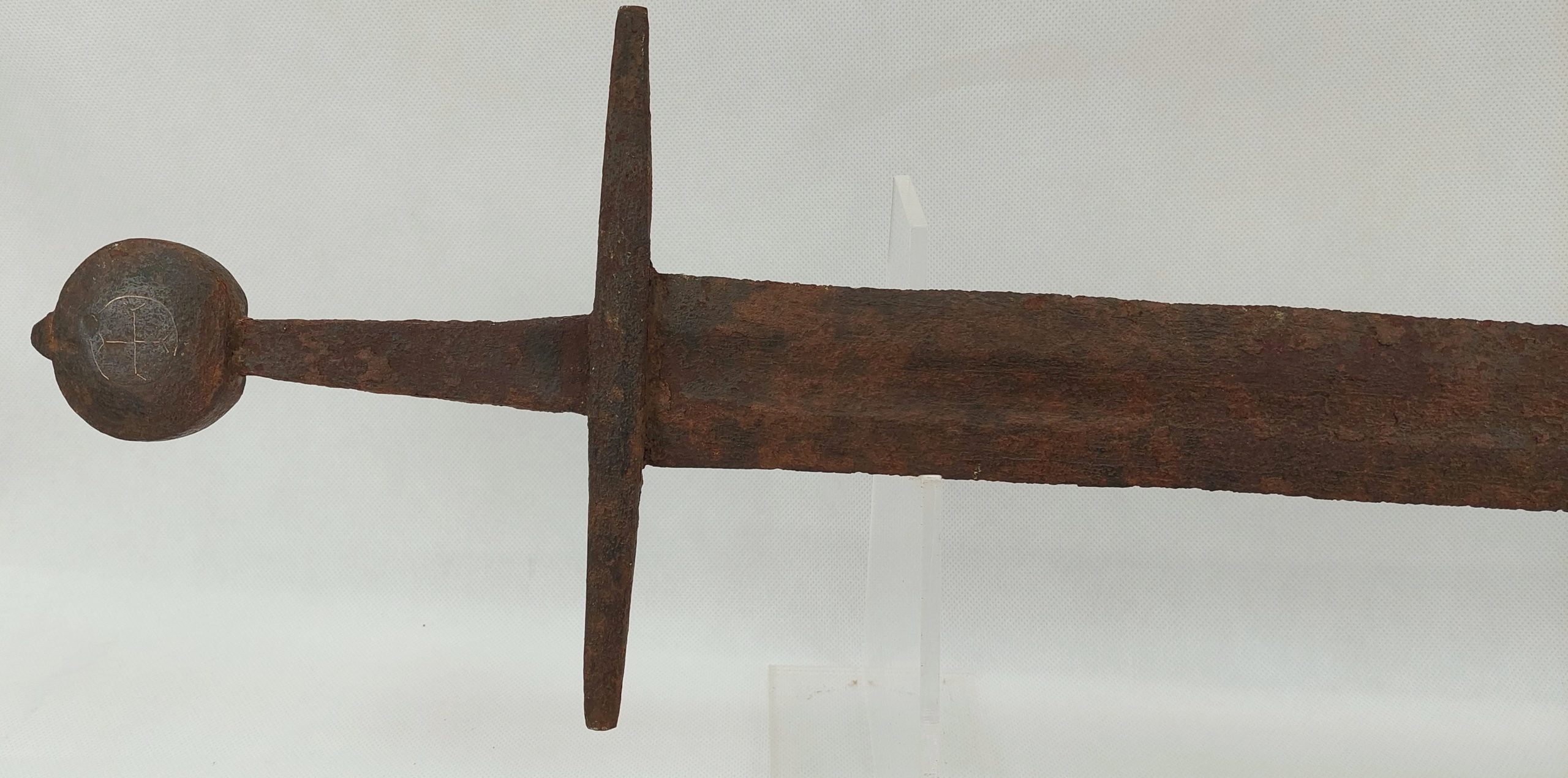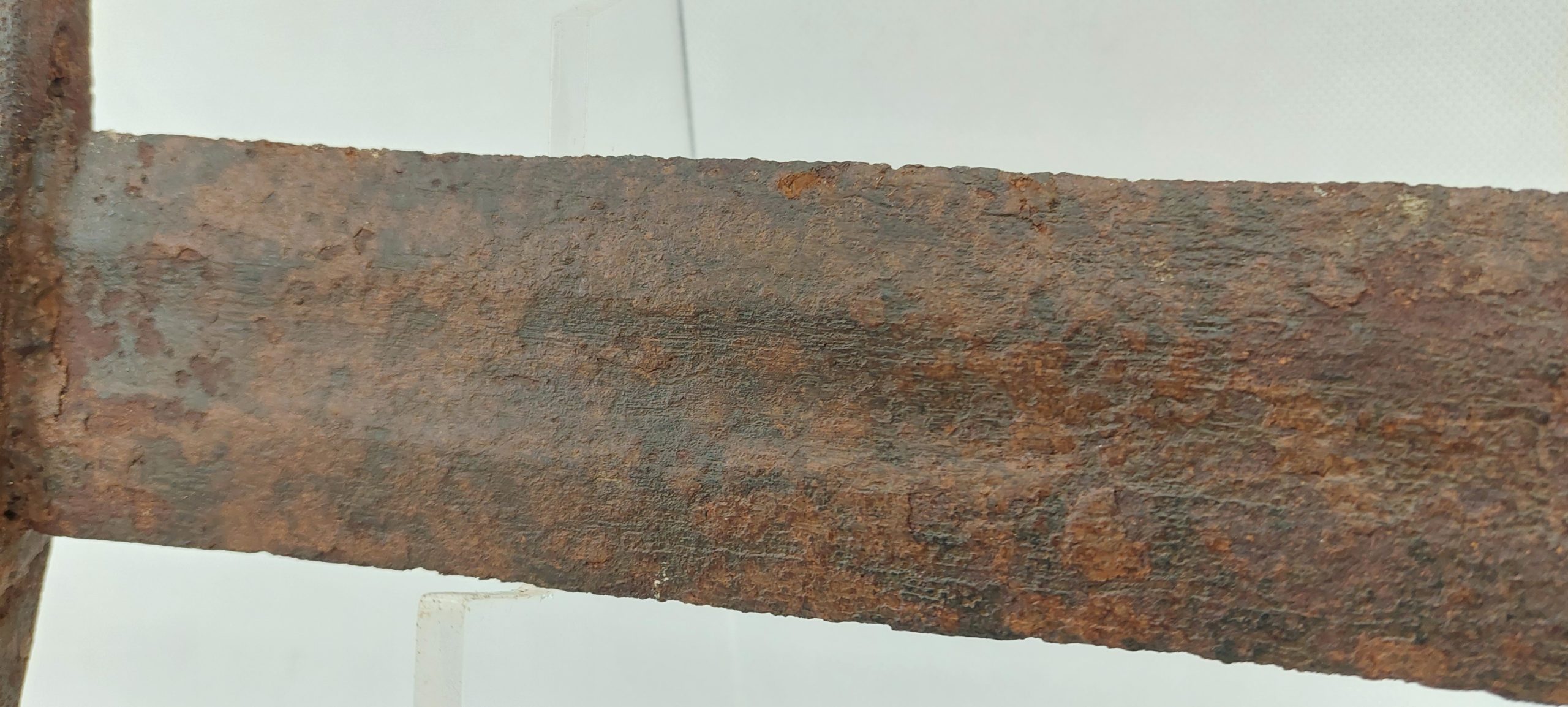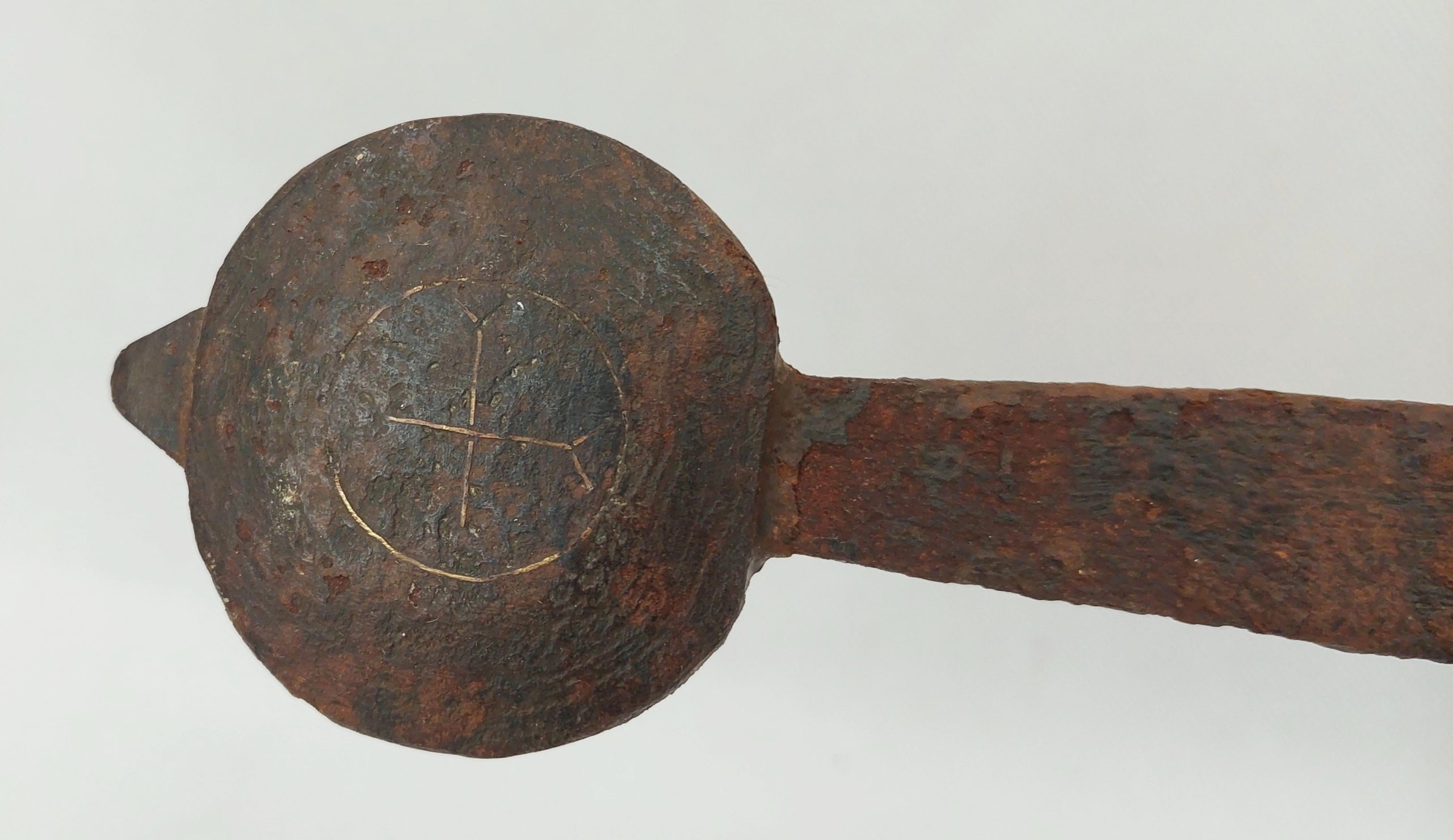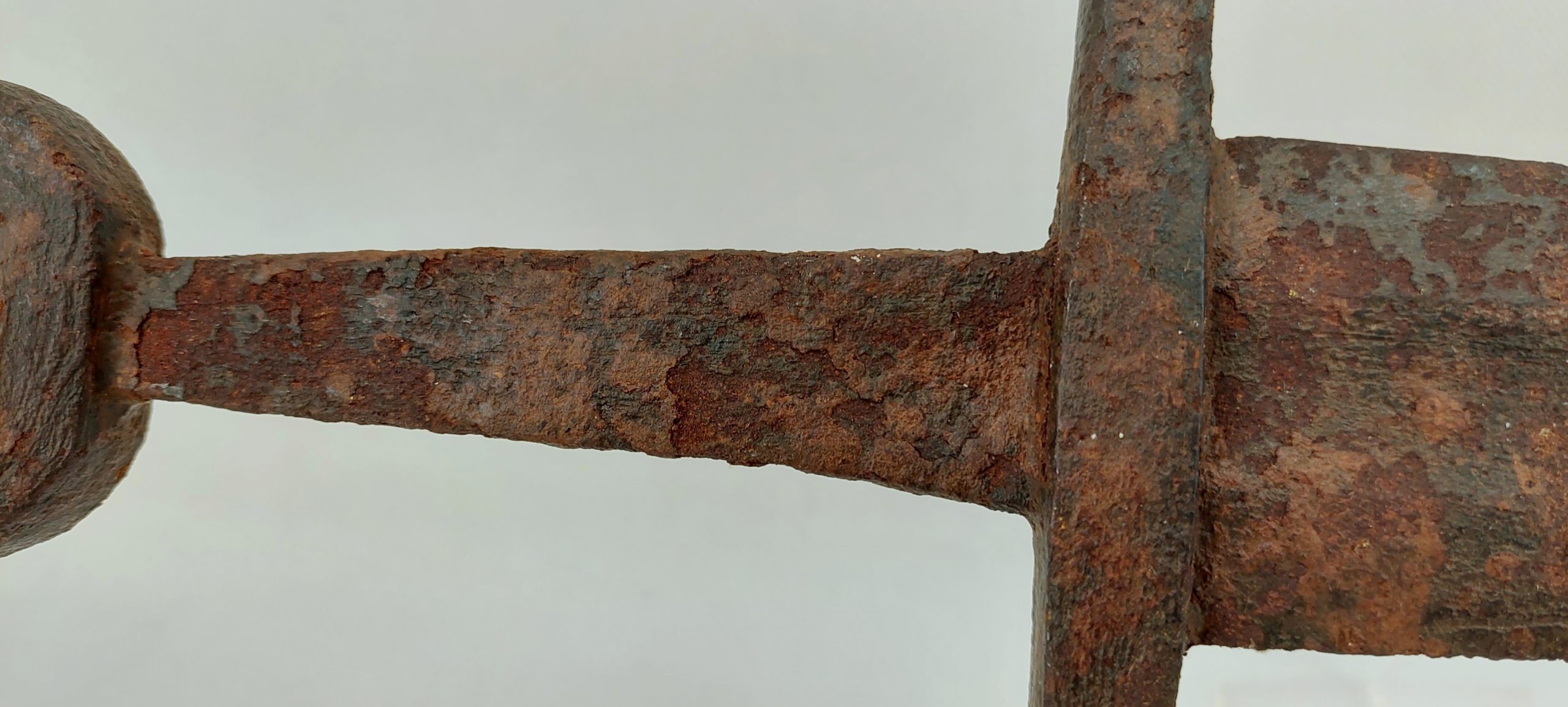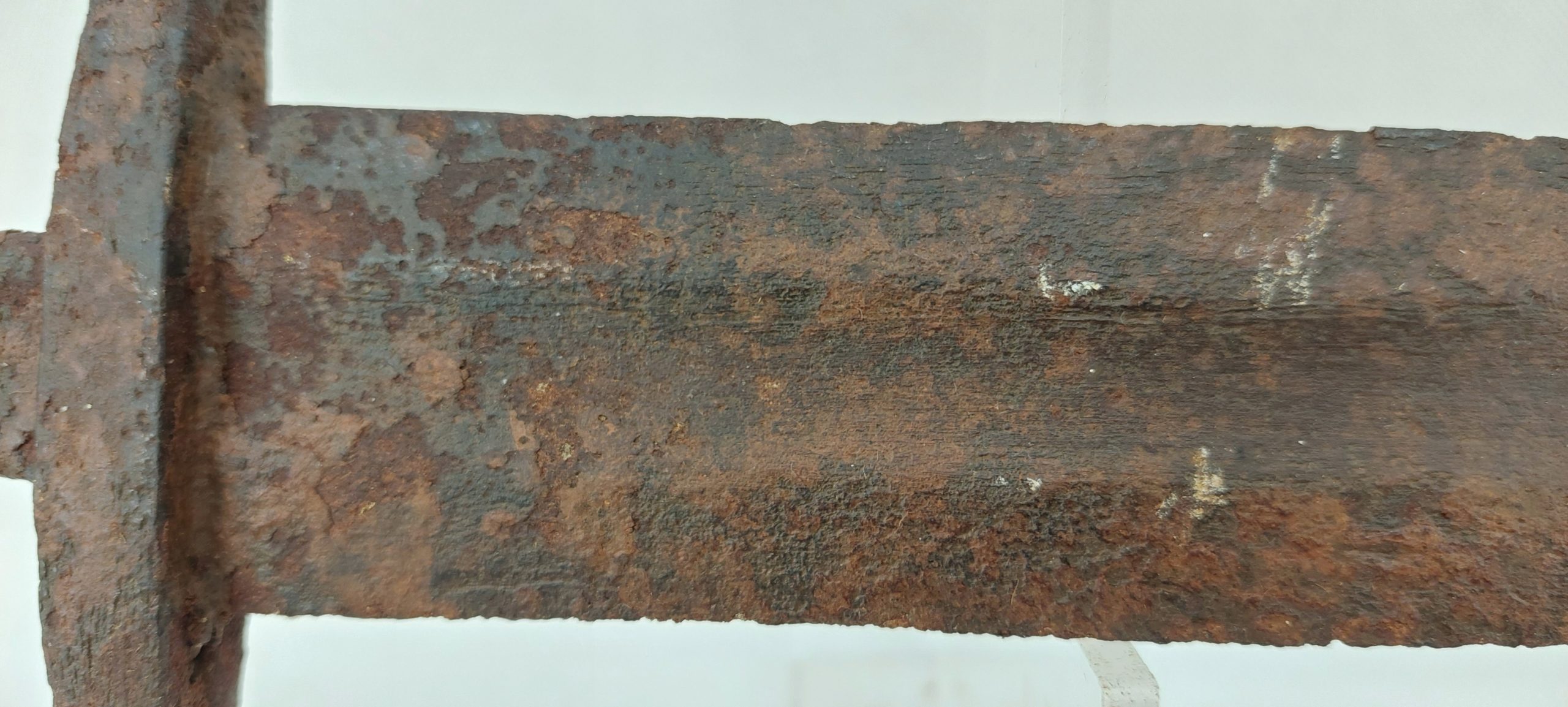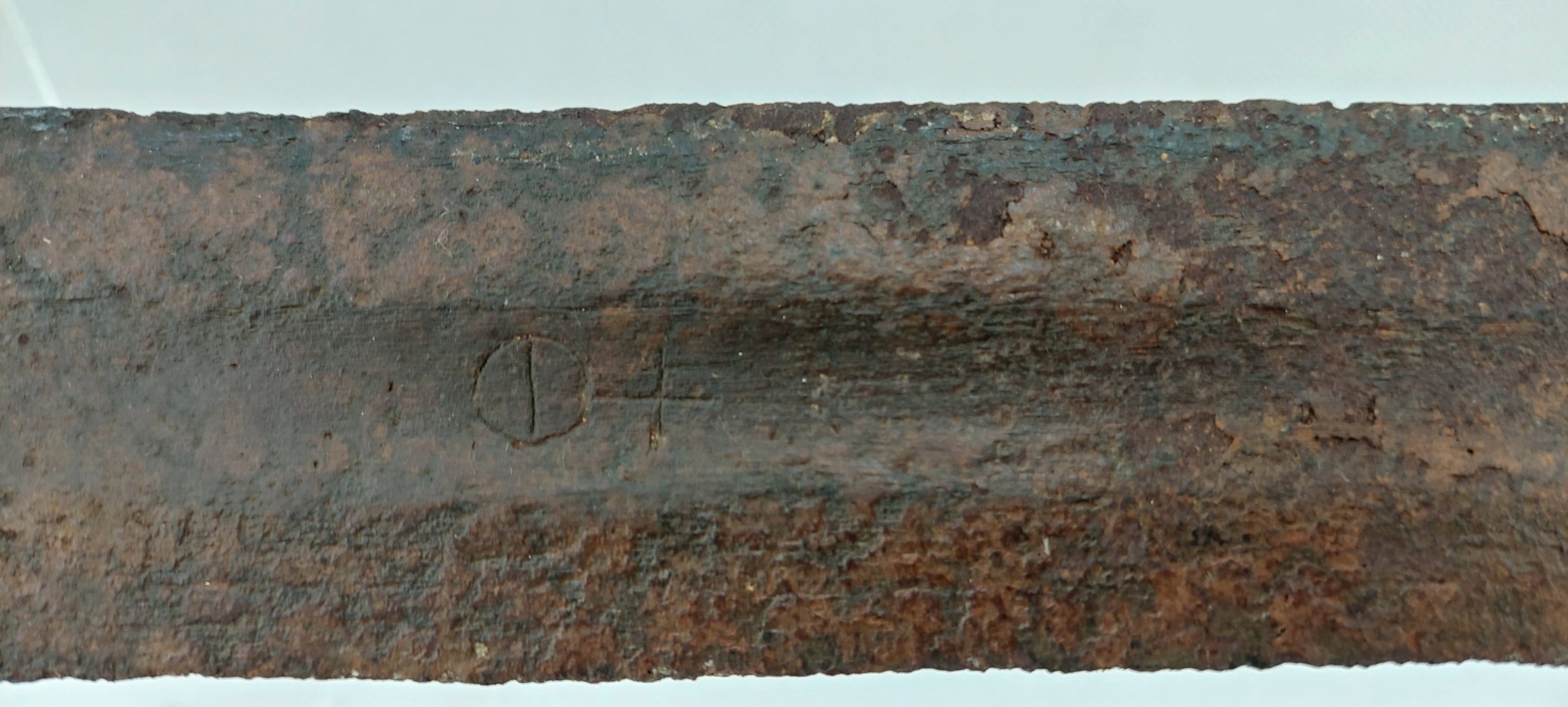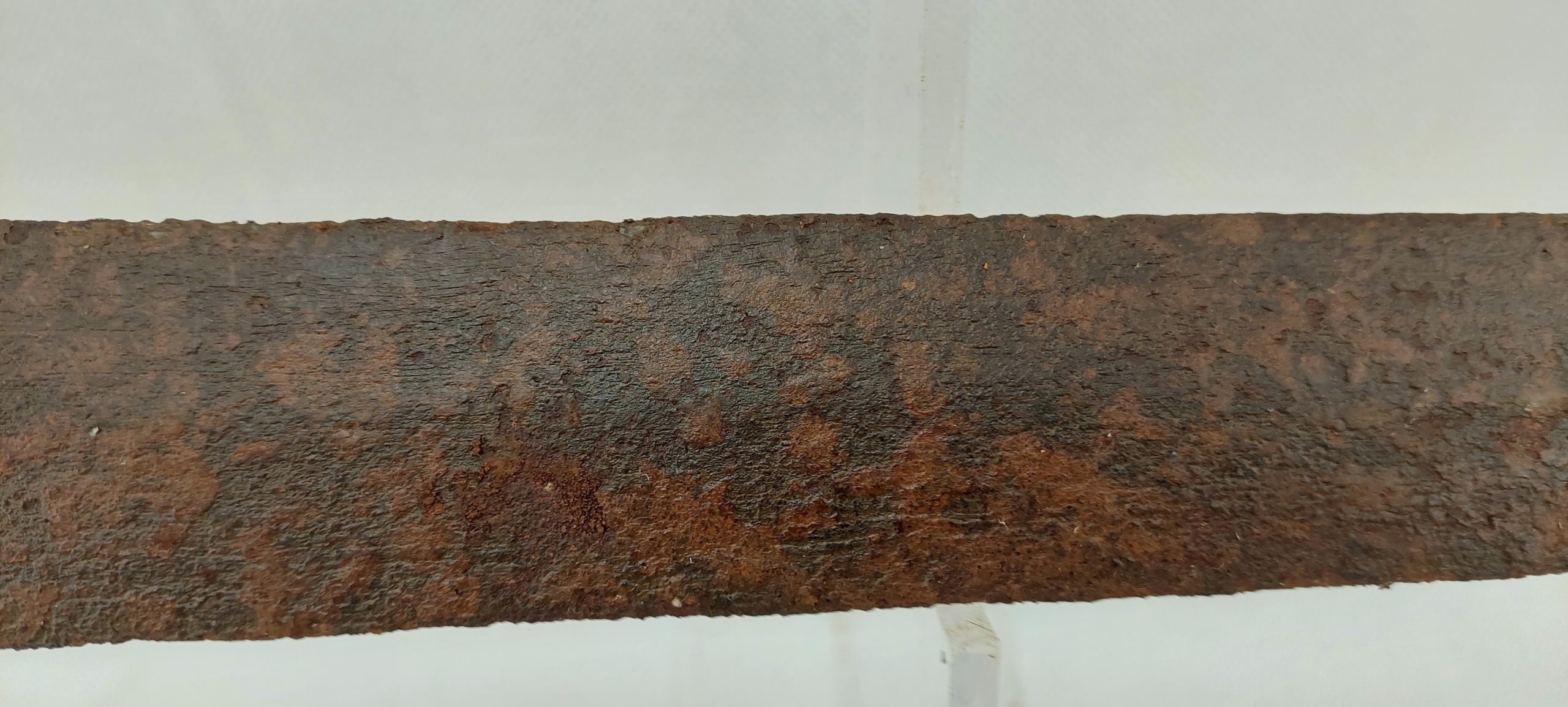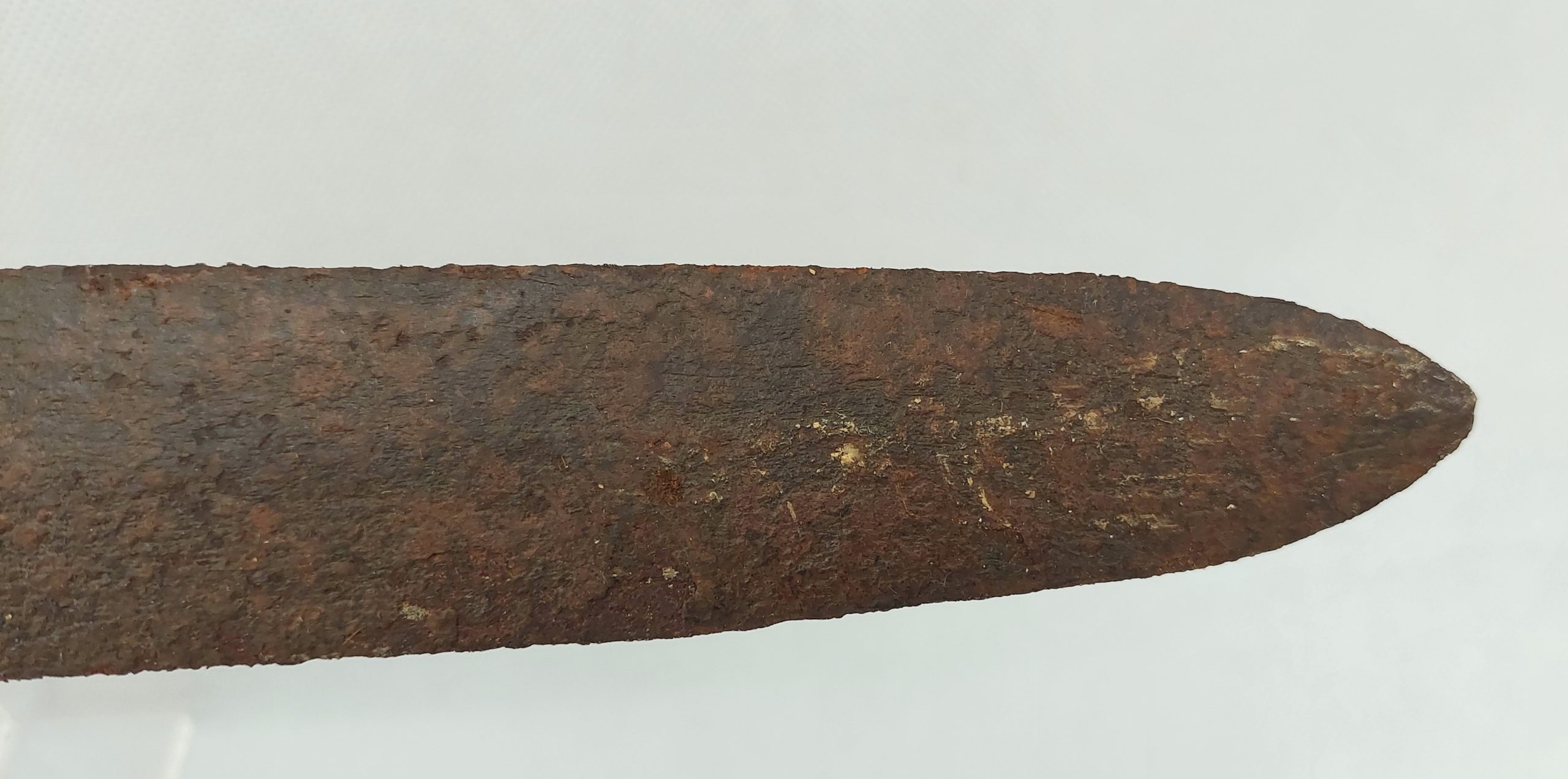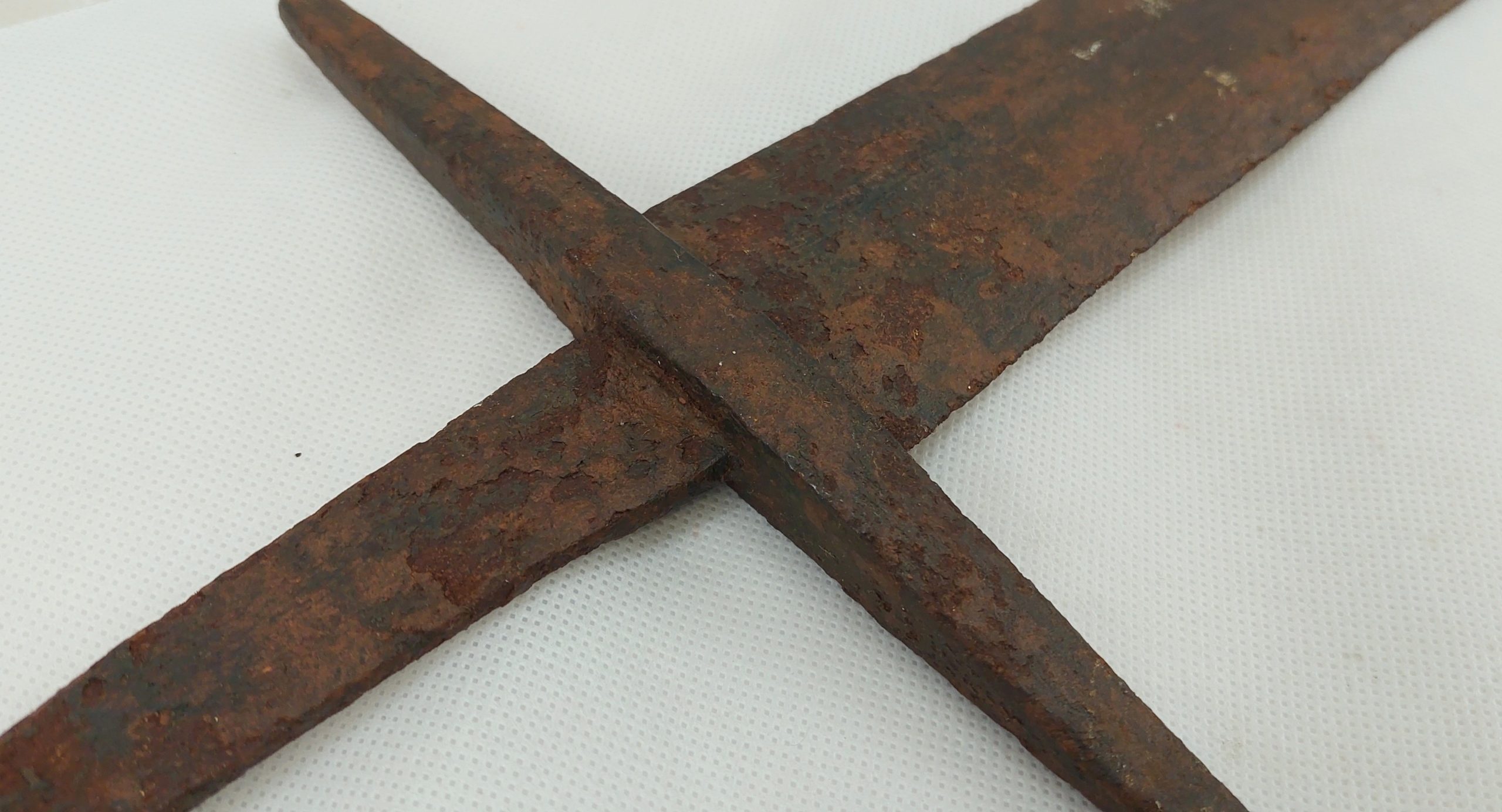~ Circa 1255 Age of the Crusades Oakeshott Type XIII Sword found in Tewkesbury Abbey Crypt ~
This sword dates from the time of the Seventh Crusade but could’ve very well been used in the Ninth Crusade of Edward Ist of England to the Holy Land.
This typifies the classic knightly sword that developed during the age of the Crusades. Typically, examples date to the second half of the 13th century. Type XIII swords feature as a defining characteristic a long, wide blade with parallel edges, ending in a rounded or spatulate tip. The blade cross section has the shape of a lens.
The grip is a typical 15 cm (almost 6 inches) – including the pommel. The cross-guards are straight, and the pommel disk-shaped (actually a Type 5 Mushroom) with a piramid finial.
On the pommel we can see on both sides a gold inlay of a Cross Fourchee. The “cross fourchy” or “cross forchy” (literally “forked”) dates from c. 1255, in the arms of de Vale [Asp2 155]. This was a popular image used by Crusading Nobles to The Middle East, around the 12th Century AD. The Fourchy was originally a variation of the standard Christian Cross of the 5th Century AD.
The blade also is etched with the ‘globus cruciger’ (Latin for “cross-bearing orb”), also known as “the orb and cross”, the Christian symbol of authority since the Middle Ages (The cross represents Christ’s dominion over the orb of the world, literally held in the hand of an earthly ruler. In the iconography of Western art, when Christ himself holds the globe, he is called Salvator Mundi – Latin for “Saviour of the World”).
~ Condition ~
The sword is in relic condition, as seen in the pictures.
~ Dimension ~
The blade length is 78.5 cm (31 inches) and the overall lenght of the piece is 96 cm (37 2/3 cm.
~ The Abbey ~
The Abbey of the Blessed Virgin Mary, Tewkesbury, Gloucestershire, one of the finest Norman buildings in England, is the second largest parish church in England, having become so at the Dissolution of the Monasteries. Its massive crossing tower was rated “probably the largest and finest Romanesque tower in England” by Sir Nikolaus Pevsner. Fourteen of England’s cathedrals are of smaller dimensions; only Westminster Abbey contains more medieval tombs.
The Chronicle of Tewkesbury records that the first Christian worship was brought to the area by Theoc, a missionary from Northumbria, who built his cell in the mid-7th century near on a gravel spit where the Severn and Avon rivers join together. The cell was succeeded by a monastery in 715, but nothing remaining of it has been identified.
In the 10th century, the religious foundation at Tewkesbury became a priory subordinate to the Cranbourne Abbey in Dorset. In 1087 William the Conqueror gave the manor of Tewkesbury to his cousin Robert Fitzhamon, who, with Giraldus, Abbot of Cranbourne, founded the present abbey in 1092. Building of the present Abbey church did not start until 1102, employing Caen stone imported from Normandy and floated up the Severn.
Robert Fitzhamon died at Falaise in Normandy, in 1102, but his son-in-law, Robert Fitzroy, the natural son of Henry I who was made Earl of Gloucester, continued to fund the building work. The Abbey’s greatest single later patron was Lady Eleanor le Despenser, last of the De Clare heirs of the FitzRoys. In the High Middle Ages Tewkesbury became one of the richest abbeys of England.
~ Famous graves in the abbey ~
1107 – when the abbey’s founder Robert Fitzhamon died in 1107, he was buried in the chapter house while his son-in-law Robert fitzRoy (an illegitimate son of King Henry I), Earl of Gloucester, continued building the abbey
1375 – Edward Despenser, Lord of the Manor of Tewkesbury, is remembered today chiefly for the effigy on his tomb, which shows him in full color kneeling on top of the canopy of his chantry, facing toward the high altar
1395 – Robert Fitzhamon’s remains were moved into a new chapel built as his tomb
1471 – a brass plate on the floor in the center of the sanctuary marks the grave of Edward of Westminster, Prince of Wales, the son of King Henry VI and end of the Lancastrian line, who was killed in the Battle of Tewkesbury – the only Prince of Wales ever to die in battle.
1477 – the bones of George, “Butt of Malmsey” Clarence, (brother of Edward IV and Richard III) and his wife Isabelle (daughter of Richard “the Kingmaker” Neville) are visible behind a glass window in a wall behind the high altar
1539 – the cadaver tomb Abbot Wakeman had built for himself is not actually a grave, because he was not buried there
Also buried in the abbey are several members of the Despenser, de Clare and Beauchamp families, all of whom were generous benefactors of the abbey.
MLABG00


